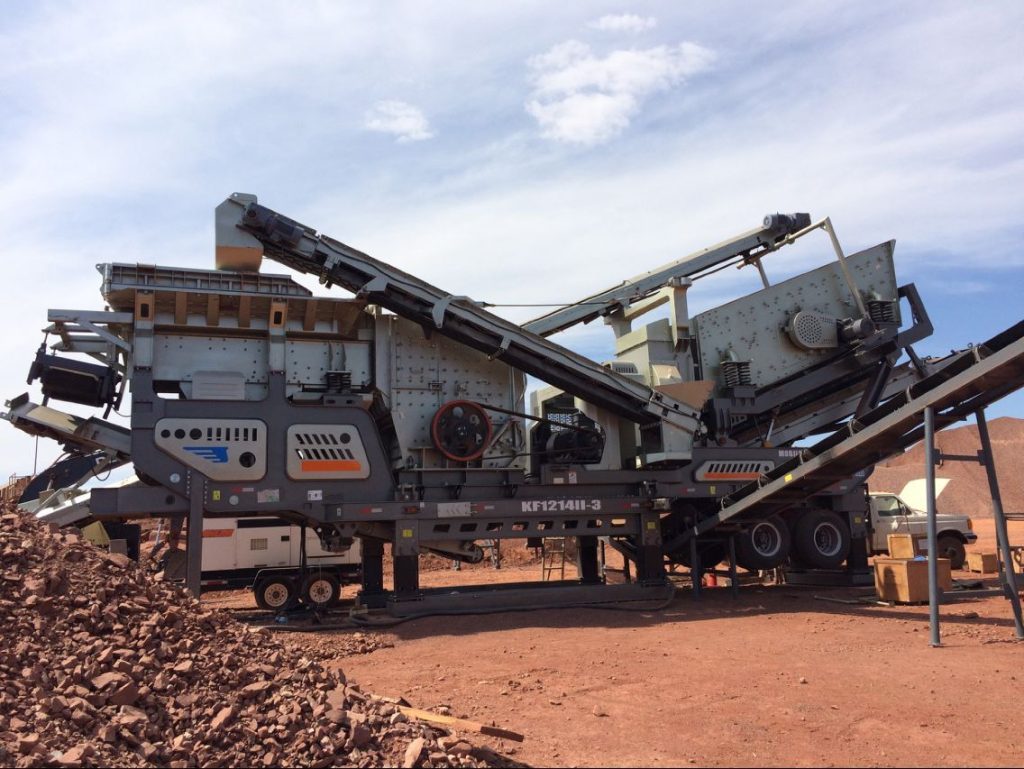Mobile Impact Crusher for Construction Waste Recycling: An Efficient Solution
With the rapid expansion of urbanization and infrastructure projects, the amount of construction waste has increased significantly. Proper disposal and recycling of this waste are essential to minimize environmental impact and maximize resource utilization. Mobile impact crushers have emerged as an efficient and cost-effective solution for processing construction debris.
In this article, we will explore the advantages of mobile impact crushers, their working principle, and their applications in construction waste recycling.
1. Why Choose a Mobile Impact Crusher for Construction Waste Recycling?
A mobile impact crusher is specifically designed for crushing construction waste, including concrete, bricks, asphalt, and other demolition materials. It offers several key benefits:
✅ High Efficiency – Processes large volumes of material quickly and effectively.
✅ Mobility – Easily transported between job sites, reducing logistics costs.
✅ Versatile Applications – Capable of producing various aggregate sizes for reuse in construction.
✅ Eco-Friendly – Reduces landfill waste and promotes sustainable recycling.
✅ Cost-Effective – Saves on transportation and landfill fees by processing waste on-site.
Liming Heavy Industry provides advanced mobile impact crushers that enhance productivity while ensuring environmental sustainability.

2. How Does a Mobile Impact Crusher Work?
A mobile impact crusher operates using a powerful impact mechanism to break down materials into smaller, reusable aggregates.
Crushing Process:
1️⃣ Material Feeding – Construction waste is loaded into the crusher’s hopper.
2️⃣ Impact Crushing – A high-speed rotating rotor with impact hammers crushes the material against the impact plates.
3️⃣ Screening & Separation – The processed material is screened to achieve the desired particle size.
4️⃣ Final Output – Recycled aggregates are ready for use in new construction projects.
This method ensures efficient crushing and uniform particle distribution, making it ideal for recycling applications.
3. Applications of Mobile Impact Crushers in Construction Waste Recycling
Mobile impact crushers play a crucial role in sustainable construction and waste management. Some key applications include:
🔹 Recycling Concrete and Asphalt – Producing high-quality aggregates for road construction.
🔹 Demolition Waste Processing – Reusing bricks, tiles, and debris for new building materials.
🔹 Road and Infrastructure Projects – Utilizing crushed waste as a base for roads and foundations.
🔹 Landfill Reduction – Significantly decreasing the volume of waste sent to landfills.
By utilizing mobile impact crushers, construction companies can turn waste into valuable resources while contributing to a circular economy.
4. Choosing the Right Mobile Impact Crusher
When selecting a mobile impact crusher, consider the following factors:
✔ Processing Capacity – Match the crusher’s capacity with your project requirements.
✔ Input Material Size – Ensure compatibility with the maximum feed size.
✔ Output Aggregate Size – Adjustable settings for different construction applications.
✔ Fuel Efficiency – Opt for energy-efficient models to reduce operational costs.
✔ Maintenance Requirements – Choose crushers with easy-to-replace parts for minimal downtime.
Liming Heavy Industry offers a range of high-performance mobile impact crushers tailored for construction waste recycling, ensuring durability, efficiency, and cost savings.
Conclusion
Mobile impact crushers provide an efficient, cost-effective, and environmentally friendly solution for construction waste recycling. Their mobility, versatility, and high performance make them a must-have for modern construction and demolition projects.
If you’re looking for reliable crushing equipment, Liming Heavy Industry offers cutting-edge mobile impact crushers designed to meet the toughest demands.
📞 Contact us today for expert guidance and the best crushing solutions for your project!
- > The Superiority of Hydraulic Cone Crushers Over Traditional Cone Crushers
- > Application of Jaw Crushers in Magnetite Ore Beneficiation Processing
- > Jaw Crusher for Hard Rock Crushing in Tunnel Construction
- > Jaw Crusher Optimization for Indonesian High-Moisture Clay-Type Nickel Ore
- > Is the Small Jaw Crusher Ideal for Rural Road Construction? Applications and Benefits
- > High-Performance Cone Crushers for Hard Basalt: Enhancing Material Processing Efficiency
- > Suitability of Mobile Crushing Plants in Mining Operations
- > Cone Crusher for Kaolin Processing in Nigeria: Enhancing Efficiency and Productivity
Hot Product


Online




Message
